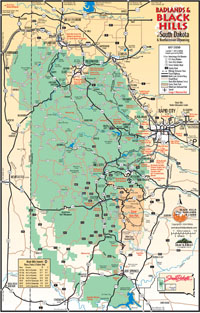

| This travelogue is one family's experience in the Black Hills area of South Dakota. To see a photo in a 1024 x 681 size, just click on it. Note that the panoramic shots are as wide as 1600 pixels when you click on them, so make your browser as wide as you can. We hope you enjoy the record of our journey, and that you get to experience your own. | |
| This is a famous view of Mount Rushmore looking through a tunnel on Iron Mountain Road, a scenic byway that winds from Custer State Park up to Mount Rushmore. |
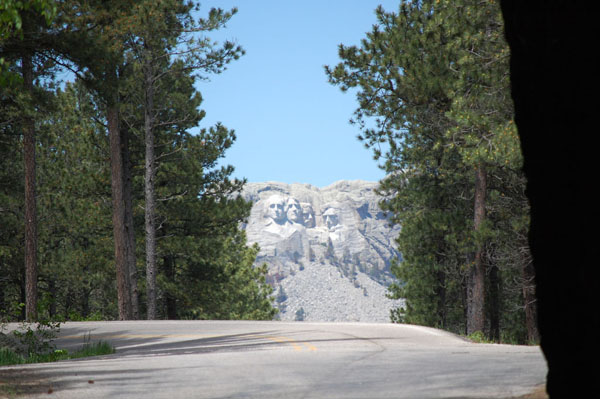
|
| Here is Teresa at the foot of Mount Rushmore. To give some perspective, George Washington's head is 60 feet high. |
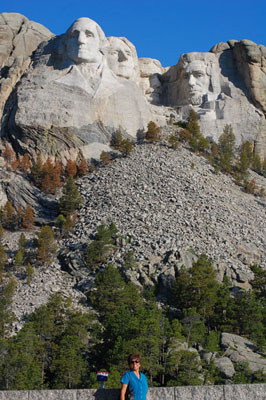
|
| This is a classic postcard shot of Mount Rushmore. For photographers, the sculture faces east, so we went there at 7:00 am when the monument opened up to catch the morning sun. We were also blessed with a deep, blue sky. |
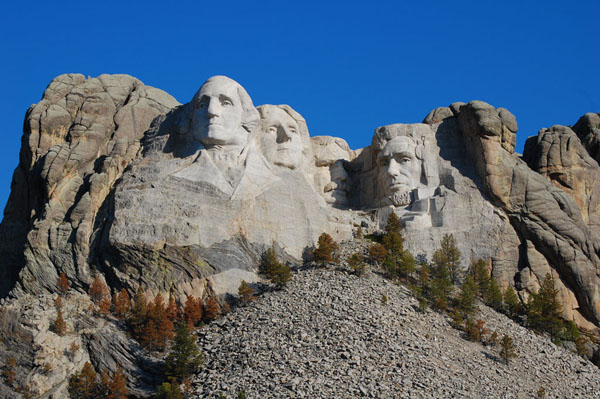
|
| Here is the main drag in Keystone, a picturesque tourist town two miles from Mt. Rushmore. Yes, it's very commercial, but it's done really well like the shopping areas in most of the small towns throughout the Black Hills, which may have more tee-shirts for sale per capita than anywhere else in America. |
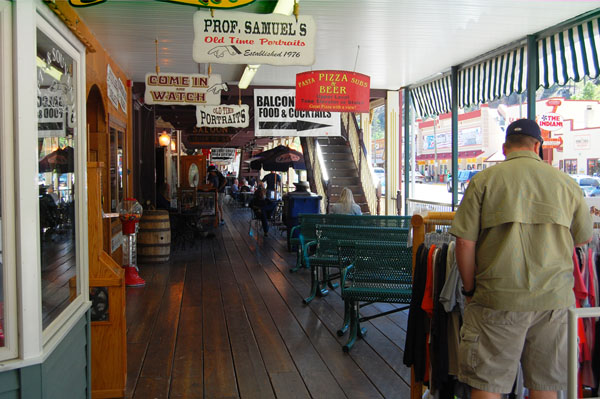
|
| This is the 1880 Train that runs from Keystone to Hill City, which is about 10 miles away. It takes you on a scenic tour of that part of the Black Hills and was a really fun way to spend about 2.5 hours. |
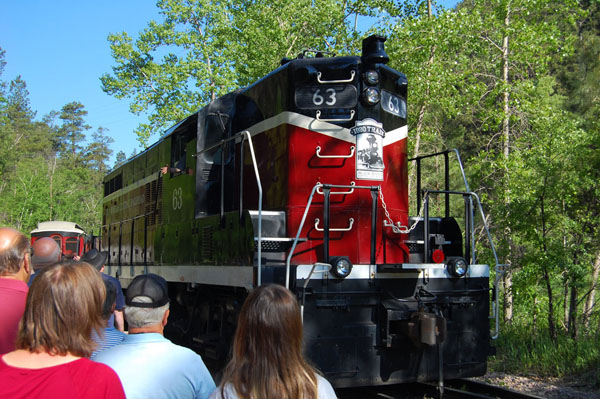
|
| This is a view of Harney Peak, which is the highest mountain east of the Rocky Mountains, at a height of 7,244 feet. |
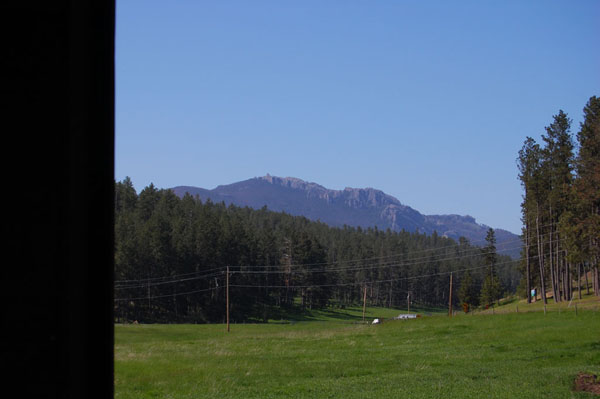
|
| The Black Hills have three of the most scenic drives in America -- Iron Mountain Road, the Needles Highway, and Spearfish Canyon Drive. This is a classic shot of the "needles" along the Needles Highway, which twists and turns through stunning granite "sculptures" carved by nature. |
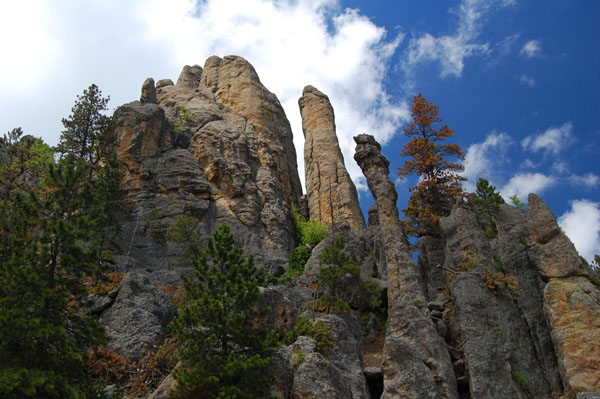
|
| This is a typical shot that you see as you wind your way through Spearfish Canyon Drive, which runs for about 15 miles in the northernmost part of the Black Hills. It was nothing short of amazing. |
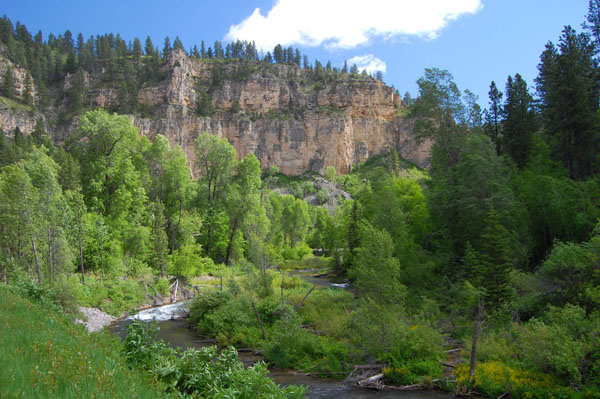
|
| Here's another shot as you travel through Spearfish Canyon Drive. Like Wind Cave National Park, Spearfish Canyon isn't as well known as other parts of the Black Hills area, but we thought that they were two of best surprises of our trip. |
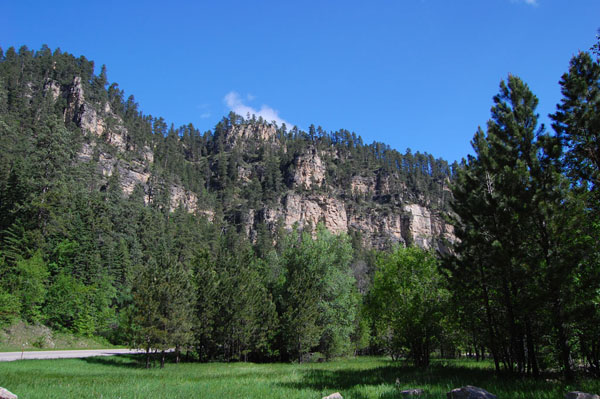
|
| The scene now shifts to Rapid City, SD, a town of about 70,000 people. Here is the view down the heart of Main Street. Incidentally, since Mount Rushmore has 3 million visitors a year, the population in the summer zooms. |
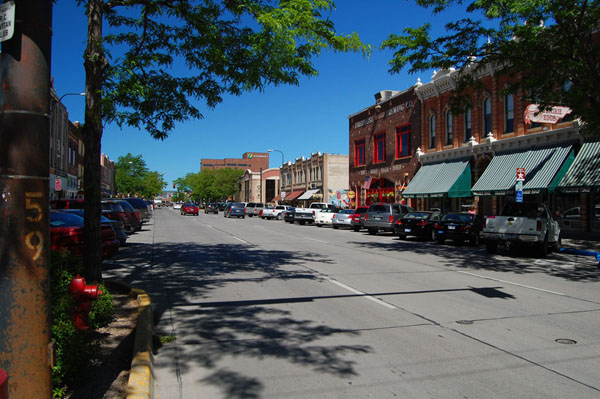
|
| One of Rapid City's most distinguishing features is a series of statues of U.S. presidents and Native Americans on its street corners. This shot shows Richard S. Nixon sitting with steepled hands. I tried to get Teresa to sit on his lap for the shot, but she wasn't buying in. |
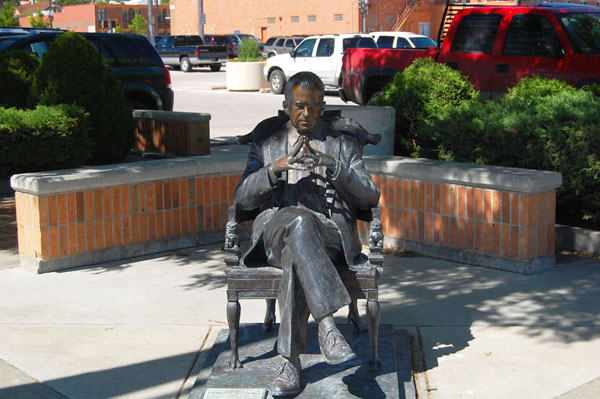
|
| Teresa and I standing with a statue of a Native American on one of the street corners in downtown Rapid City. |
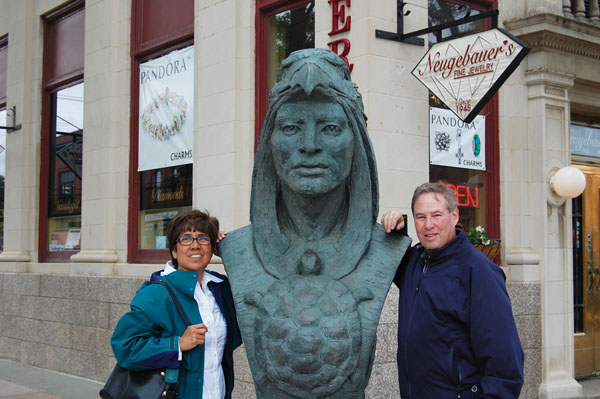
|
| Teresa looking at a statue of a Native American woman and her child. |
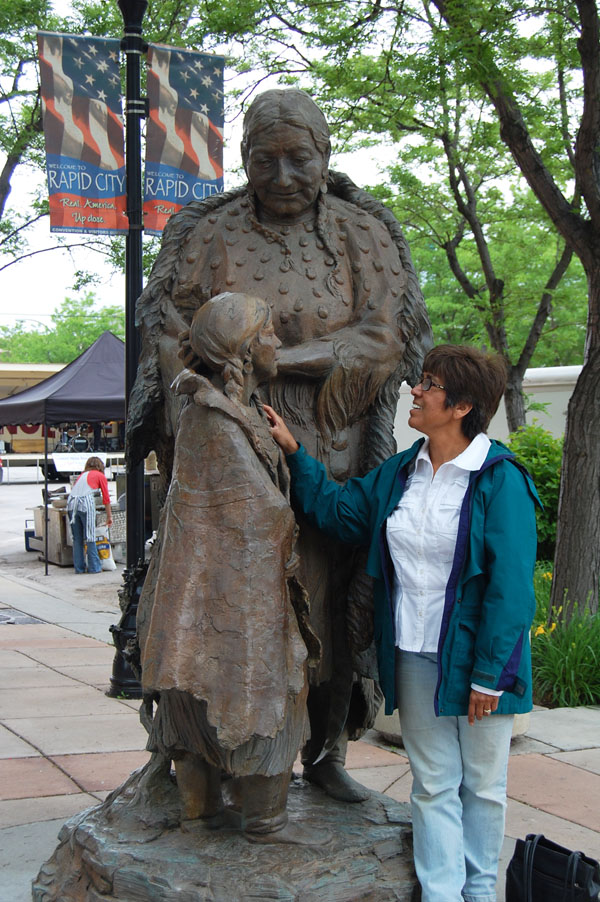
|
| Two passersby who were kind enough to pose with the statue of President George Bush, Sr. |
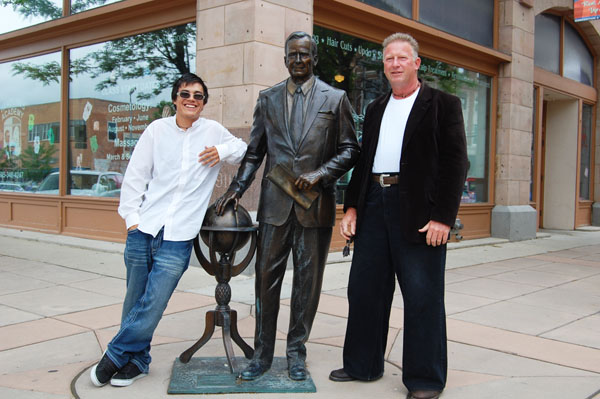
|
| A statue of a smiling Calvin Coolidge waving his hat to the passersby. |
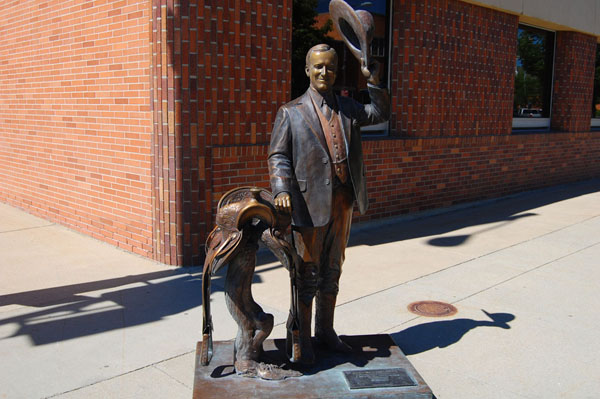
|
| I called ths shot "Serenading Ronnie." A street musician was singing and playing the harmonica to the statue of Ronald Reagan, who in real life might have told the guy to cut his beard and get a job. |
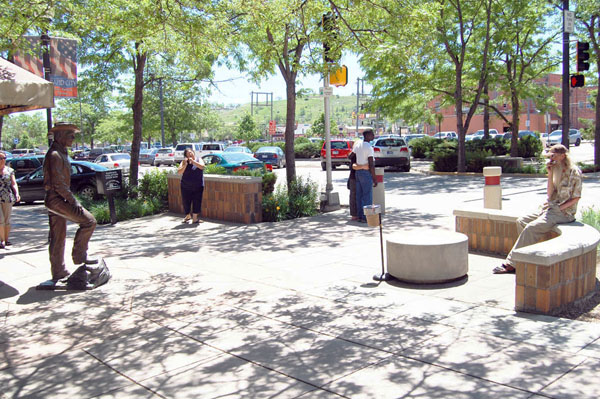
|
This is a cool picture of Mike Wolforth's Photography gallery at 516 6th Street that I call "Reflections." It appears like you're looking through a window onto the street, but you're actually viewing a reflection off the windows of the cars and the Alex S. Johnson hotel across the street. |
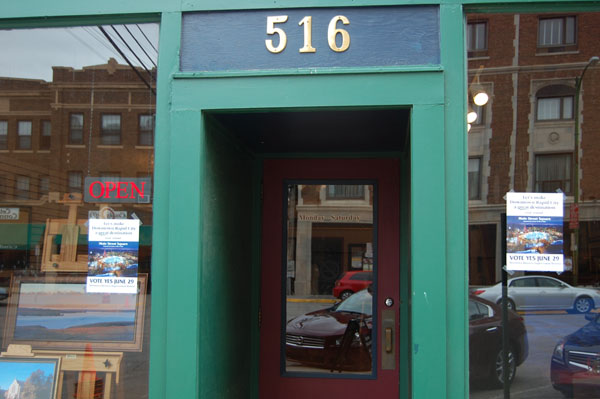
|
| Click here to tour the Custer State Park., the wildlife center of the Black Hills. |